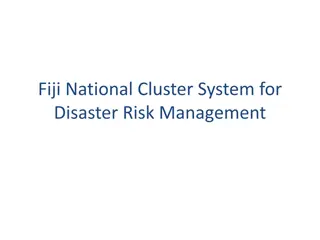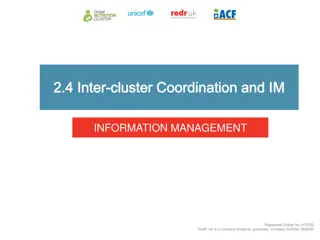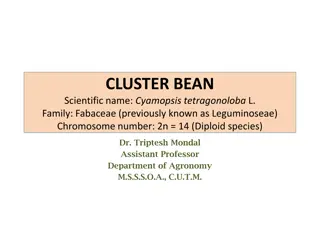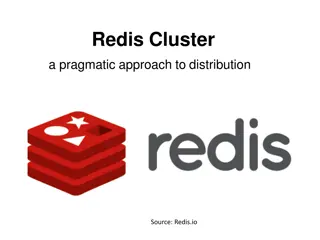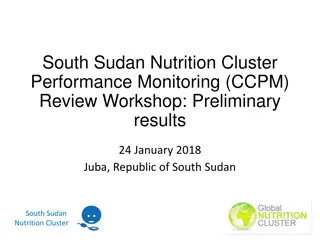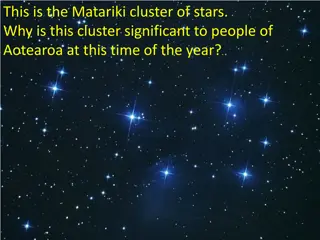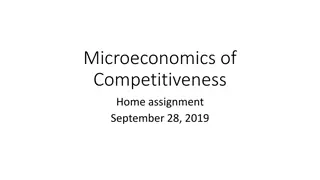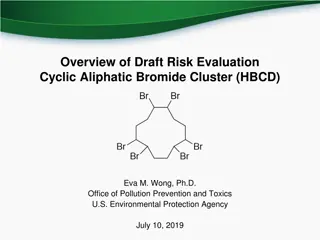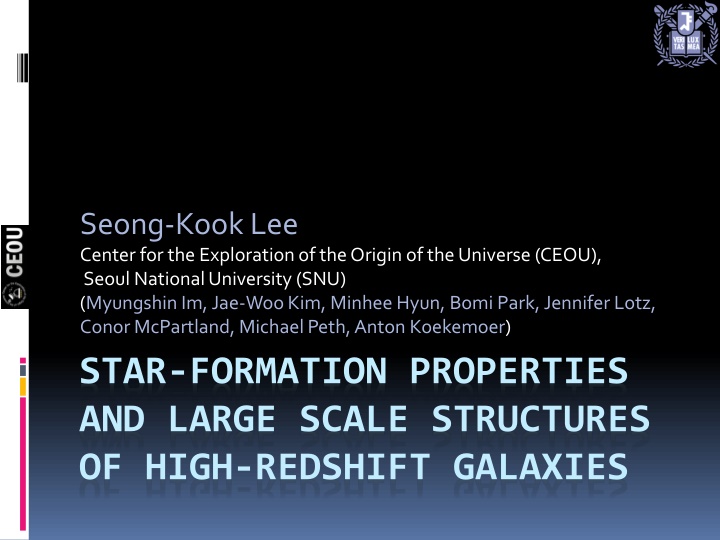
Quenching of Star Formation in Galaxies and Its Environmental Effects
Explore the mechanisms behind galaxies becoming quiescent, such as mass quenching, feedback effects, and environmental influences. Discover the environmental bi-modality in galaxy properties and how it evolves with redshift, shedding light on the complex interplay between galaxies and their surroundings.
Download Presentation

Please find below an Image/Link to download the presentation.
The content on the website is provided AS IS for your information and personal use only. It may not be sold, licensed, or shared on other websites without obtaining consent from the author. If you encounter any issues during the download, it is possible that the publisher has removed the file from their server.
You are allowed to download the files provided on this website for personal or commercial use, subject to the condition that they are used lawfully. All files are the property of their respective owners.
The content on the website is provided AS IS for your information and personal use only. It may not be sold, licensed, or shared on other websites without obtaining consent from the author.
E N D
Presentation Transcript
Seong-Kook Lee Center for the Exploration of the Origin of the Universe (CEOU), Seoul National University (SNU) (Myungshin Im, Jae-Woo Kim, Minhee Hyun, Bomi Park, Jennifer Lotz, Conor McPartland, Michael Peth, Anton Koekemoer) STAR-FORMATION PROPERTIES AND LARGE SCALE STRUCTURES OF HIGH-REDSHIFT GALAXIES
Q : How and when did galaxies become quiescent?
Quenching of SF in galaxies What makes galaxies stop forming stars? 1. Mass quenching : virial shocks slowing down the cooling rate (Birnboim+07) 2. Feedbacks : AGN/stellar (Croton+06; Somerville+08; Hopkins+14) 3. Morphological quenching : (Gavazzi+15; Zolotov+15; Tacchella+16)
Quenching of SF in galaxies 4. Environmental quenching : (Peng+10; Woo+13) Strangulation (Larson+80; Balogh+00, Peng+15) Ram pressure stripping (Gunn&Gott 72; Abadi+99) Credit: Peng+15 Galaxy harassment (Moore+96,98) Credit: Univ. of Zurich Credit: A.Chung
Effects of Environment Clear environment-dependent bi-modality in galaxy properties at local (Lewis et al. 2002; Kauffmann et al. 2004; Blanton et al. 2005) In clusters, galaxies are In field, galaxies are red color , early-type morphology, old stellar population, no star-formation (quiescent) blue color , late-type morphology, young stellar population, star-forming
Effects of Environment Clear environment-dependent bi-modality in galaxy properties at local (Lewis et al. 2002; Kauffmann et al. 2004; Blanton et al. 2005) This environmental dependence weakens with increasing redshift
Effects of Environment Clear environment-dependent bi-modality in galaxy properties at local (Lewis et al. 2002; Kauffmann et al. 2004; Blanton et al. 2005) This environmental dependence weakens with increasing redshift Still, its detailed evolution is not conclusive :
Effects of Environment z~1 Clear environment-dependent bi-modality in galaxy properties at local (Lewis et al. 2002; Kauffmann et al. 2004; Blanton et al. 2005) This environmental dependence weakens with increasing redshift Still, its detailed evolution is not conclusive : e.g. SF-densityrelation: reversal (Elbaz+07, Cooper+08) or not (Patel+09, Muzzin+12, Quadri+12) at z~1? field
Effects of Environment Clear environment-dependent bi-modality in galaxy properties at local (Lewis et al. 2002; Kauffmann et al. 2004; Blanton et al. 2005) This environmental dependence weakens with increasing redshift Still, its detailed evolution is not conclusive : e.g. SF-densityrelation: reversal (Elbaz+07, Cooper+08) or not (Patel+09, Muzzin+12, Quadri+12) at z~1? investigation at higher redshift well beyond z~1 needed ( need deep (NIR) data)
Effects of Environment Clear environment-dependent bi-modality in galaxy properties at local (Lewis et al. 2002; Kauffmann et al. 2004; Blanton et al. 2005) This environmental dependence weakens with increasing redshift Still, its detailed evolution is not conclusive : e.g. SF-densityrelation: reversal (Elbaz+07, Cooper+08) or not (Patel+09, Muzzin+12, Quadri+12) at z~1? (NIR), Spitzer/IRAC channel 1,2,3,4 (MIR) investigation at higher redshift well beyond z~1 needed ( need deep (NIR) data) UKIDSS/UDS : ~0.8 sq. deg. Subaru B,V,R,i,z (optical), UKIRT J,H,Ks
Method: cluster finding z-range : 0.028(1+z) step size : z = 0.02
Method: cluster finding z-range : 0.028(1+z) step size : z = 0.02 4 Figures from Kang & Im 15
Quiescent galaxy fraction Q.G.F. = Nquiescent/ Ntotal : cluster : field 1. Q.G.F depends more strongly on stellar mass than environment Lee,S.-K., Im, M. et al. 2015, ApJ, 810,90
Quiescent galaxy fraction Q.G.F. = Nquiescent/ Ntotal : cluster : field 1. Q.G.F depends more strongly on stellar mass than environment 2. Environmental dependence becomes significant at z < 1.2-1.3 (for low-mass galaxies)
Quiescent galaxy fraction Variation among clusters at similar epoch
Quiescent galaxy fraction Variation among clusters at similar epoch cluster 3 cluster 2 cluster 1
Summary Quiescent galaxy fraction (Q.G.F) shows stong stellar-mass dependence within the redshift range (0.5 < z < 2.0) Environmental dependence of Q.G.F. becomes significant at z < 1.3 & for low-mass galaxies There exists large variation among individual clusters (at similar epoch) in their Q.G.F. The Q.G.F. seems to be related with the LSS to which the galaxy clusters belong





